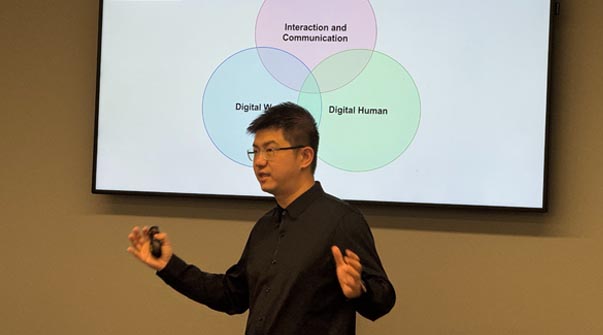
Augmented Communication for a Universally Accessible Metaverse
Ruofei Du
Invited Talk at UMD by Dr. Varshney , College Park, Maryland.
pdf |

Extended reality (XR) enables seamless user interface (UI) transitions across people, objects, and environments, yet the design space, applications, and common practice of 3D UI transitioning have been underexplored. To address this gap, we first conducted a need-finding study with 11 participants to distill three types of UI positionings: affixed to a static entity, a dynamic entity, or a self entity, and generate an application taxonomy. Then we surveyed 113 commercial apps to understand the common practice of 3D UI mobility control, where only 6.2% of apps allowed users to move a UI. We made prototypes to facilitate UI transitions between all three types of entities. We collected user perception of 3D UI mobility control in a qualitative user study (N=14) and found that perceived usefulness is affected by types of entities and environments. Our work fills a crucial void in UI mobility in XR.